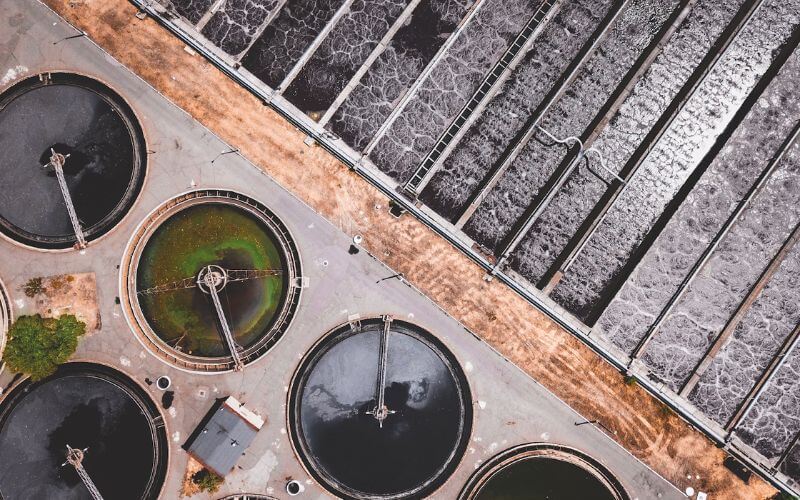Do you have second thoughts about sticking with the conventional sewer system or making the transition to a septic tank? If that’s the case, you’ve come to the right place. In this blog post, we’ll be taking an in-depth look at the pros and cons of both options. We’ll examine all of the factors that go into making this decision – maintenance requirements, cost savings, environmental considerations, and more. Whether you’re looking to make a change because you recently moved into a new home or simply considering how it can improve your current living situation, by reading our comparative evaluation here today – you’ll have all the information necessary for making well-informed decisions about what is right for your home!

Septic Tanks: Self-Contained Onsite Wastewater Treatment
When it comes to wastewater treatment, septic tanks offer a simple and effective solution for many homes and businesses. These self-contained systems can treat and process wastewater onsite, without the need for connection to a larger municipal system. However, like any system, septic tanks require maintenance and occasional service to remain functional. That’s where septic tank services come in, whether it’s routine pumping to prevent overflow, repairs to fix issues that may arise, or even new installations, they are essential for keeping these systems in working order and ensuring the safe and sanitary disposal of wastewater. So if you rely on a septic tank for your wastewater needs, be sure to seek out reliable and professional services to keep it running smoothly.
Sewer Systems: Centralized Municipal Wastewater Collection
On the other hand, sewer systems serve as a centralized solution for wastewater collection, treatment, and disposal in urban and suburban areas. Unlike septic systems, homeowners don’t need to worry about individual maintenance, as the municipal body handles this. Sewer systems connect an entire community’s wastewater to a central treatment plant through a network of underground pipes.
This centralized system, while convenient, can have potential downsides. Homeowners have to pay monthly fees for the service, and in the event of system failures or overflows, a large number of properties can be affected. Furthermore, the infrastructure of sewer systems requires significant resources to build and maintain, and this can be reflected in the costs borne by the taxpayer or homeowner. Despite some disadvantages, sewer systems continue to be a popular choice due to their convenience and the comprehensive service provided by municipalities.
Cost Considerations: Installation and Maintenance
For septic systems, the initial installation can be quite expensive, varying greatly based on the size of the tank, the soil condition, and the local regulations. However, once installed, the ongoing costs are typically lower. Regular maintenance, such as pump-outs every 3-5 years and occasional repairs, are the main expenses, but these tend to be relatively affordable.
Sewer systems, on the other hand, require less upfront cost as the infrastructure is already in place, especially for properties in urban areas. However, homeowners are responsible for monthly fees, which can be considerable depending on the region and the volume of wastewater produced. Furthermore, unpredictable costs can arise from line repairs or replacements, which can add significantly to the total cost over time.
In both cases, it’s essential to keep in mind that environmental considerations, such as potential soil contamination or damage to natural water sources, can also lead to unexpected costs. Therefore, it’s important to consider not just the immediate costs, but the long-term financial implications as well.
Also Read: Septic Tank vs a Sewer: What’s the Difference?
Environmental Impact: Sustainability and Local Regulations
When it comes to environmental sustainability, both septic tanks and sewer systems have distinct impacts. Septic systems, if maintained properly, can be a more environmentally friendly option. They function by releasing treated wastewater into the ground, which can replenish local groundwater supplies. However, if not properly maintained, they can contribute to groundwater pollution. This consideration has led to local regulations and guidelines on their placement, design, and maintenance in many regions.
Sewer systems, on the other hand, have the potential to contribute to water pollution if there is a system overflow or a breakdown in the treatment process. The wastewater from entire communities is treated at centralized plants, and these plants often discharge treated water into rivers or other bodies of water. While this water is treated to remove harmful substances, there can still be an impact on local ecosystems. This has prompted local and federal regulations to control the treatment process and discharge quality.
In conclusion, both septic tanks and sewer systems can be viable wastewater solutions for your home. When making this decision, it’s important to consider the cost of installation and maintenance, as well as any environmental impacts associated with each choice. Be sure to consult local regulations before installing or modifying either system and conduct research to find reliable services in your area for proper maintenance. Armed with this information you can make the best decision for your home, and start enjoying a safe and sustainable wastewater solution!